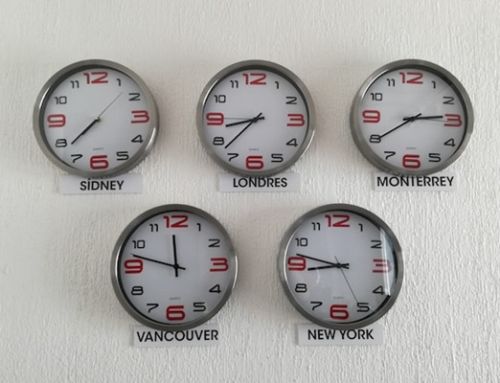The pandemic highlighted the importance of a dynamic talent and work model. HR can help businesses focus on scalability, agility, and brand identity and face the challenges crises could bring.
The entrepreneurs who dealt with profound upheaval due to the pandemic struggled to understand what the crisis meant for their businesses until toward its end. The pandemic triggered immediate and profound changes in the way organisations function and individuals work and interact. The world witnessed a shift to remote work, acceleration of digitisation, dynamic relocation of resources, and automation of processes to meet the latest organisational and individual needs.
As businesses entered the post-pandemic era, leaders figured out that the management system based on control, bureaucracy, and hierarchy are no longer effective and must be replaced with a more responsive and flexible model that provides better connection, and lower transaction costs, automation, and demographic shifts. HR experts have the role of reimagining the basic pillars of an organisation. The present models are adaptable, creative, and durable. Networks of teams replace hierarchies, competitors become collaborators, and brands become more human, collaborative and inspiring.
Photo by Christina @ wocintechchat.com on Unsplash
What is HR’s role in this context?
McKinsey researched how companies can organise better in the future, and the conclusions show that the brands working towards success need to focus on simplicity and speed, know their values, and grow by scaling up their ability to innovate and learn. HR plays an important role in the process, as it supports organisational transformation by facilitating change in all these areas.
The brands that execute with purpose are more likely to create notable long-term value generation that could improve employee engagement, trigger better financial performance, and boost customer trust. Human resources ensure that the brand lives its values and purpose by role-modelling and articulating behaviours and individual mindsets connected to purpose by promoting the essential moments in a company’s culture. HR also adapts capability-building and recruitment processes by identifying the qualities of a purpose-driven worker and including them within the recruitment and development processes.
The businesses that can relocate talent to match their strategic plans have twice more chances to perform than their competitors. It’s crucial to place the best talent into critical positions to connect talent to value. Therefore, brands must eliminate the traditional approach that promoted hierarchy and a setting in which talent and roles were interchangeable. But putting the right individuals into key roles requires a disciplined approach where companies create value. HR’s role is to manage talent by developing an analytics capability to use data to recruit, retain, and educate the best workforce.
How HR can boost branding
Until recently, no one would have associated HR with the brand creation of an organisation. However, the pandemic revealed that the HR department could play an essential role in developing a strong brand image, but only if it maintains a balance with the other areas. A brand with a strong HR can have several benefits because it’s a more attractive organisation to work with. Studies show that talent leaders think that a brand’s ability to hire talent is connected to the employer’s brand. Unfortunately, not all companies have an HR department to assist them with their branding, and it’s crucial to hire a third party to look after their brand and make it flourish.
Human resources can improve a company’s brand by checking the brand map and determining the public’s perception of the company in relation to its competitors. If you want to find more about what information a brand map includes, here’s a great explanation of Brand Mapping. Once HR takes hold of the data that reveals what aspects the brand needs to improve, it can curate it to appeal not only to employees and talent but also to others that check the brand’s values to determine if they should purchase products and services. Also, over the last years, with the impact of the pandemic, many people re-evaluate their careers, and it’s paramount that the brand presents itself as an option to consider when applying for a new position. The way it positions itself in relation to its competitors can present the brand as one talent would want to work for. HR can create a robust brand that draws potential hires and increases interest among the public.
Why should the HR and Marketing departments collaborate?
Even if Human Resources and Marketing are two different departments in a business, the collaboration between them is crucial when building a brand. The collaboration could help create a brand that works for the company. Also, the marketing team could help the HR department communicate brand awareness successfully and overcome its lack of marketing skills. As a result, the HR department could take active ownership of the brand. Some experts believe that when the employees’ behaviour, which is usually under the remit of Human Resources, fails to deliver the message the marketing team establishes, HR would deal with less engaged workers. A more engaged workforce is more likely to promote a company’s brand, which both the marketing and HR departments can shape. Furthermore, the collaboration between the two can also boost employees’ engagement.
Besides employee engagement, a strong employer brand can also build a positive reputation and carry a company’s core elements. When the company uses its brand to share strong messages with the public, and show how it promotes a work-life balance and supports employee wellbeing and satisfaction, it helps develop some key pillars for HR.
Human Resources can step up when a company fails
Human Resources’ role is to take the brunt of responsibility of pushing a company when it loses its direction. It can keep a brand afloat by ensuring all employees are engaged and motivated and by creating campaigns and initiatives that keep the workforce happy and satisfied. After the pandemic, organisations didn’t focus on promoting their brands, but a well-established HR department can step in and ensure brand image isn’t neglected.






Leave A Comment